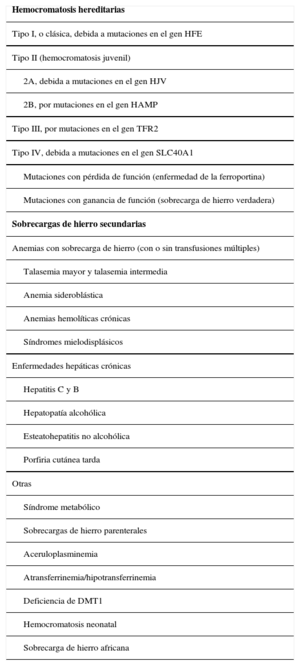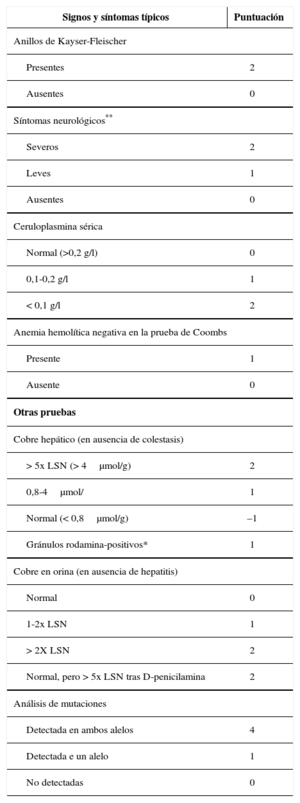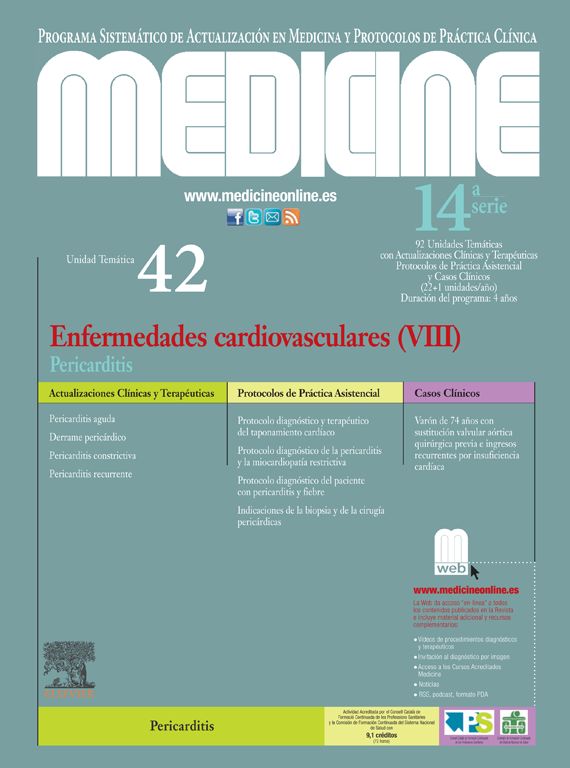El hierro y el cobre son nutrientes esenciales para la síntesis de numerosas proteínas, interviniendo en diversas reacciones enzimáticas. Estas funciones derivan esencialmente de su capacidad de participar en reacciones de reducción-oxidación intercambiando electrones. Sin embargo, esta misma capacidad es responsable de que puedan generar radicales libres lesivos para la célula.
EtiopatogeniaTanto el déficit como el exceso de estos metales es causa de deterioro de las funciones celulares y enfermedad, existiendo una serie de mecanismos fisiológicos que proporcionan un estrecho control de la homeostasis de ambos elementos.
Manifestaciones clínicasLa hemocromatosis y la enfermedad de Wilson son trastornos del metabolismo de estos metales, que ocasionan la acumulación de hierro y cobre, y la lesión de diversos órganos, fundamentalmente del hígado. Ambas enfermedades tienen un origen genético, muestran un patrón autosómico recesivo y un espectro fenotípico variable.
DiagnósticoEl conocimiento de su patogenia permite la correcta interpretación de las pruebas bioquímicas para su diagnóstico.
TratamientoLa depleción de estos metales, en el primer caso mediante sangrías y en el segundo con el uso de quelantes, previene la aparición de complicaciones orgánicas.
Palabras clave
The iron and copper are essential nutrients for the synthesis of numerous proteins interfering in various enzymatic reactions. These functions derive essentially from their ability to participate in redox reactions exchanging electrons. However, this same ability is responsible for that generate harmful free radicals for the cell.
EtiopathogenyBoth the deficit and excess of these metals causes deterioration of cell functions and disease, and there are a number of physiological mechanisms that provide tight control of the homeostasis of both.
Clinical manifestationsHemochromatosis and Wilson's disease are disorders of the metabolism of these metals, causing the accumulation of iron and copper, and the injury of various organs, primarily the liver. Both diseases are genetic, show an autosomal recessive pattern and a variable phenotypic spectrum.
DiagnosisUnderstanding its pathogenesis allows the correct interpretation of biochemical tests for diagnosis.
TreatmentDepletion of these metals, in the first case by the second indents and with the use of chelators, prevents the development of organ complications.
Keywords
Identifíquese
¿Aún no es suscriptor de la revista?
Comprar el acceso al artículo
Comprando el artículo el pdf del mismo podrá ser descargado
Teléfono para incidencias
De lunes a viernes de 9h a 18h (GMT+1) excepto los meses de julio y agosto que será de 9 a 15h








